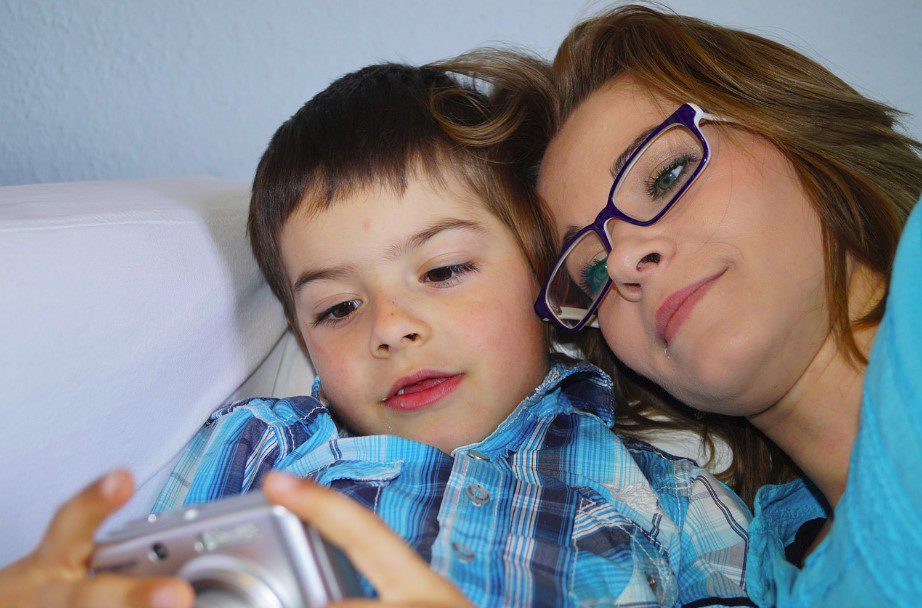Following the rise of social media, smartphones, artificial intelligence, and now, deepfake technology, parents are challenged to navigate a digital world that has become increasingly complex and challenging.
Deepfake technology has the potential to manipulate and deceive with unprecedented accuracy. This makes it one of the most significant challenges parents face in the digital era.
In this article, we will explore the impact of this technology and what parents can do to protect children.
Exactly what is deepfake technology?
According to Wikipedia,
Deepfakes (portmanteau of “deep learning” and “fake”) are synthetic media that have been digitally manipulated to replace one person’s likeness convincingly with that of another.
Wikipedia
Deepfake technology uses artificial intelligence and machine learning algorithms to manipulate digital content, such as images and videos. Users tweak these to create highly realistic and often deceptive representations.
The term deepfake comes from a combination of deep learning and “fake.” These refer to the process of creating a fake image or video using advanced machine learning techniques.
This angle to technology uses a process called generative adversarial networks (GANs), which involves two neural networks working against each other.
One network generates fake images or videos, while the other network tries to identify whether the content is real or fake. This process continues until the fake content is indistinguishable from the real one. This creates a highly realistic and often convincing deepfakes.
What is the impact of this technology on parenting today?
The impact of deepfake on parenting today is significant, with implications for child safety, privacy, and digital literacy.
The following are some of the ways it affects modern parenting:
1. Increased risk of cyberbullying and online harassment
Deepfake technology makes it easier for cyberbullies and online harassers to create highly convincing fake images or videos to humiliate or bully their victims. Children and teenagers are particularly vulnerable, because the technology can have devastating effects on their mental health and well-being.
2. Difficulty in identifying real from fake
This technology also makes it difficult for many people to distinguish between real and fake images or videos. This can make it harder for parents to protect their children from online threats. Eventually, it will become a challenge for children to know what information they can trust online.
3. Invasion of privacy
The technology can also be used to create fake pornographic images or videos, a practice known as “deep porn.” This can be highly invasive and distressing, particularly for children and teenagers, who may not understand the implications of their digital footprint.
4. Impact on digital literacy
As deepfake technology takes root, it is crucial that parents teach their children digital literacy skills to navigate the online world safely. This includes educating children on the risks and challenges of deepfake technology and how to identify fake content.
Challenges parents face while protecting children

The rise of deepfake technology has presented significant challenges for parents in protecting their children. Here are only a few of them:
1. Lack of awareness
Many parents are not aware of the risks and challenges associated with deepfake technology, let alone knowing it exists. Educating parents on the risks and providing them with resources to protect their children is crucial.
2. Difficulty in identifying deepfakes
This technology is becoming increasingly sophisticated by the day. This makes it difficult to identify fake content. Parents face a dilemma trying to determine which information is trustworthy and which is not.
3. Privacy concerns
Parents also worry about their children’s privacy and the potential misuse of their personal information. Educating children on the importance of protecting their personal information and using privacy settings on social media platforms can help mitigate these risks.
4. Impact on mental health
It can also have a significant impact on a child’s mental health. This is particularly true if they become victims of cyberbullying or online harassment. Parents must be aware of the signs of mental health issues and seek professional help if needed.
Ways to protect children from deepfake technology

As deepfake technology becomes more widespread, parents must take steps to protect their children from its potential harms. Here are some ways to protect children:
1. Educate children on the risks
Children need to understand the risks such as cyberbullying, invasion of privacy, and the spread of misinformation. Parents can have open conversations with their children about the risks and provide them with resources to learn more.
2. Teach children to identify deepfakes
Children should be taught how to identify deepfakes so that they can better protect themselves online. Some signs of a fake digital content include unnatural movements or speech patterns, inconsistencies in the lighting or sound quality, and unusual behavior or actions.
3. Monitor children’s online activity
Parents should monitor their children’s online activity, including their social media profiles and the content they are viewing. This can help parents identify any potential risks and take action to protect their children.
4. Use privacy settings on social media platforms
Social media platforms often have privacy settings that allow users to control who can see their content and personal information. Parents should ensure that their children are using these settings to protect their privacy online.
5. Seek professional help where needed
If a child becomes a victim of cyberbullying or experiences mental health issues related to deepfake technology, parents should seek professional help. This can include therapy or counseling to help the child cope with the emotional effects of cyberbullying and online harassment.
FAQs
1. Can deepfake technology be used for positive purposes?
Yes, deepfake technology can be used for positive purposes, such as creating realistic simulations for training purposes or creating digital versions of deceased loved ones for therapeutic purposes. However, the risks associated with deepfake technology cannot be ignored.
2. What can parents do to protect their children from deepfake technology?
Parents can protect their children from deepfake technology by educating them on the risks and challenges associated with it, teaching them how to identify fake content, and monitoring their online activity.
3. How can children protect themselves from deepfake technology?
Children can protect themselves from deepfake technology by being aware of the risks and challenges associated with it, using privacy settings on social media platforms, and being cautious about sharing personal information online.
The last word
Deepfake technology presents significant challenges for parenting in the digital age. The risks associated with deepfake technology, including cyberbullying, invasion of privacy, and difficulties in identifying real from fake, cannot be ignored.
Parents must be aware of the challenges and take steps to protect their children, including educating them on the risks and challenges associated with deepfake technology and monitoring their online activity. By working together, parents and children can navigate the online world safely and securely.





Leave a Reply